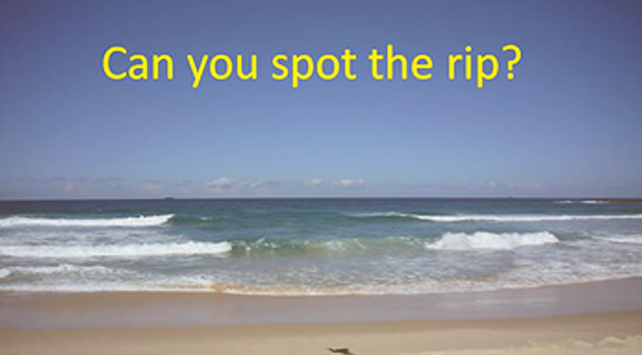How To Survive a Rip Current (Rip Tide)
 Following on from our article on water safety, we have been asked to go into a bit more detail regarding what to do if you are unfortunate enough to be caught in a rip current (sometimes but incorrectly referred to as a rip tide).
Following on from our article on water safety, we have been asked to go into a bit more detail regarding what to do if you are unfortunate enough to be caught in a rip current (sometimes but incorrectly referred to as a rip tide).
What is a Rip Current?
So what exactly is a rip current? Rip currents are generally a small but strong water current that runs away from the shore line, they tend not to be that wide, somewhere between 10 and 100 meters across, and they are formed when water that is already close to shore is displaced by waves coming in. Naturally that water has to go somewhere so it moves parallel to the shore before finding an area to go back out to sea, often between sand bars.
How to Avoid a Rip Current
At Explore Secure the first piece of advice we always offer is to always research the area you are going to swim in. Rip tides will be common to certain areas and Google is a great tool, but nothing beats speaking to locals, especially the lifeguards if there are any. Don’t ever hesitate to go and speak to locals, they will never think less of you for asking, in-fact quite the opposite – because if you fall foul of one it is likely they will have to risk their life to come and save you.
Once at the water, and as I mentioned in my previous article, please, please, please speak with the lifeguards who are on duty, these guys know the beach intimately, will have hourly briefs on what is happening with the conditions and more importantly tell you where is safe to swim. If no lifeguard is on duty, then there are some simple things to look for apart from the obvious flags and signs warning you of danger. The main visible sign for a possible rip tide is a ‘sand’ or darker patch of water that is moving away from the shore. This is happening because the water that is rushing back out to the sea is churning up the sea bed. This also occurs with stoney areas but you do have to look a bit more closely.
Oddly enough, look for areas on the water that are calmer than their surroundings. This is due to the ‘incoming’ waves being neutralised by the ‘outgoing’ displaced water and so giving the false impression of a calmer area!

Look for the difference in the waves, there will be an obvious change in appearance between the left and right side of the rip i.e. the middle part will have different wave patterns, possibly none at all.
How to Survive Rip Currents
If the worst happens and you are caught in a rip current, there are some easy to remember principles about how to come out unscathed.
- Although easily said rather than done – when battling against a strong current, try and stay calm, when panic sets in it becomes much more difficult to make a logical decision about how to deal with the danger.
- Try and let people know you are in trouble, either by shouting or waving your arms, but obviously be careful not to expend too much energy as you may need it later, also don’t get water in your mouth!
- If you can, try and stand up, you would be surprised how shallow some sea beds are, the strongest current is normally at the top so you should be able to get a good foot hold, then. try and walk at 90 degrees to the current to get you out.
- If you cannot stand up, relax and do not fight the current, go with it, the biggest killer when caught is that of exhaustion because people try and swim directly back to the shore. Rip currents flow at a faster pace than any human can normally swim, even an Olympic swimmer! . If you can start to swim at 90 degrees to the beach and this will take you into the part of the sea/water that is moving back to shore. Yes it does sound crazy but if you cannot swim strongly enough, turn yourself onto your back and allow the current to take you out to sea, it will not be too far out, sometimes only a few hundred meters, you can then use your preserved energy to swim back to shore or await rescue.
But please, when you are safely back on shore, make every effort to ensure that others are aware of the rip current, too many people just get out and walk off leaving the danger unseen for others to stumble into.
At Explore Secure we have a specific animated module on surviving rip currents, including many other briefings and information on how to stay safe when traveling. Please visit us at www.exploresecure.com.
Thanks for reading and safe travels.
The Explore Secure team.






